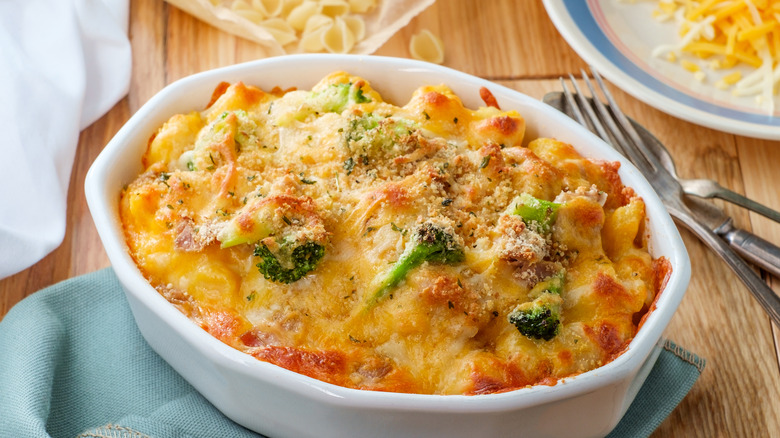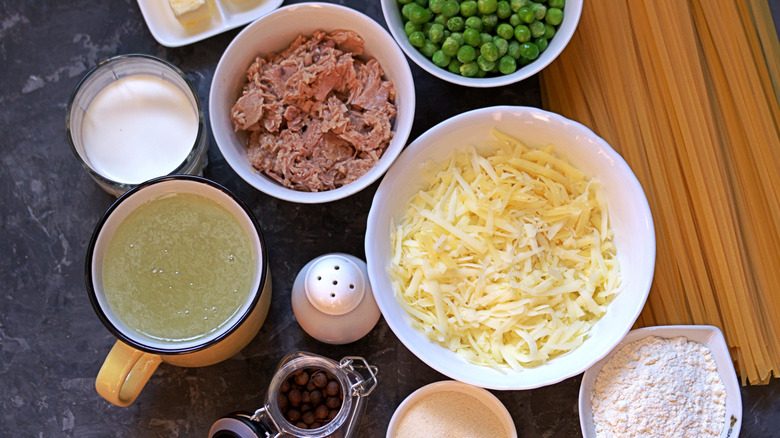Add Some Tang To Tuna Noodle Casserole With A Dollop Of Sour Cream
Tuna noodle casserole is a family-friendly staple because it's inexpensive, quick to assemble, and made almost exclusively from pantry goods, including pasta and tinned fish. While there are several ways to elevate this comforting dish — such as adding a dollop of spicy dijon mustard, a simple scattering of dill fronds, or a crispy panko topping — a dash of sour cream lends this American classic an appetizing tang. It enhances the dish with an added layer of flavor that's hard to pinpoint if you don't know it's there.
The characteristic tang of sour cream is produced when cream is treated with lactic acid. The bacteria in this organic acid begins to ferment when introduced to the dairy, eliciting a thicker consistency and a tarter taste. Lactic acid is also found in foods like sauerkraut, sourdough bread, and pickles, lending them anything from a mild sourness to a powerful piquancy.
The acidic dimension of sour cream is perfect for cutting through the richness of a pasta sauce that features cream, creme fraiche, or full-fat milk. (Though, did you know that the clever ingredient will also balance out the sweetness of a tomato-based sauce that you've accidentally over-seasoned with sugar?) The sour cream adds a velvety texture to the sauce, which complements the meatiness of the tinned tuna and the crispness of veggies, like broccoli florets and peas. It also loosens the consistency of a rich sauce that has become overly thick or claggy while lending it a luscious sheen.
How to add sour cream to tuna noodle casserole
Sour cream will split when added to a bubbling pot of sauce so it's better to pour it into your tuna noodle casserole at the very end of cooking when you've turned off your burner. Pour it directly into your noodles and give it a thorough stir to incorporate it evenly through the chunks of tuna and any veggie additions, such as peas, carrots, or bell peppers, to prevent the proteins in the cream from breaking down and curdling. Alternatively, remove the dish from the heat, add the sour cream in stages, and return it to the stove for a minute or so (making sure the burner is at its lowest setting). This technique, where sour cream is incorporated into a hot stew in a thin, gradual stream, is commonly employed when making beef stroganoff. As always, give your casserole a quick taste and adjust your seasonings if necessary.
To reheat a cream-based pasta sauce without the risk of it curdling, simply add more sour cream to your pan and heat it slowly while continuously stirring. There are also heaps of other ways to use sour cream in your cooking if you have any left in the fridge after preparing your noodle casserole. Try adding it to ice cream, incorporating it into the batter for banana bread, or even stirring it through a buttery serving of mashed potatoes.

